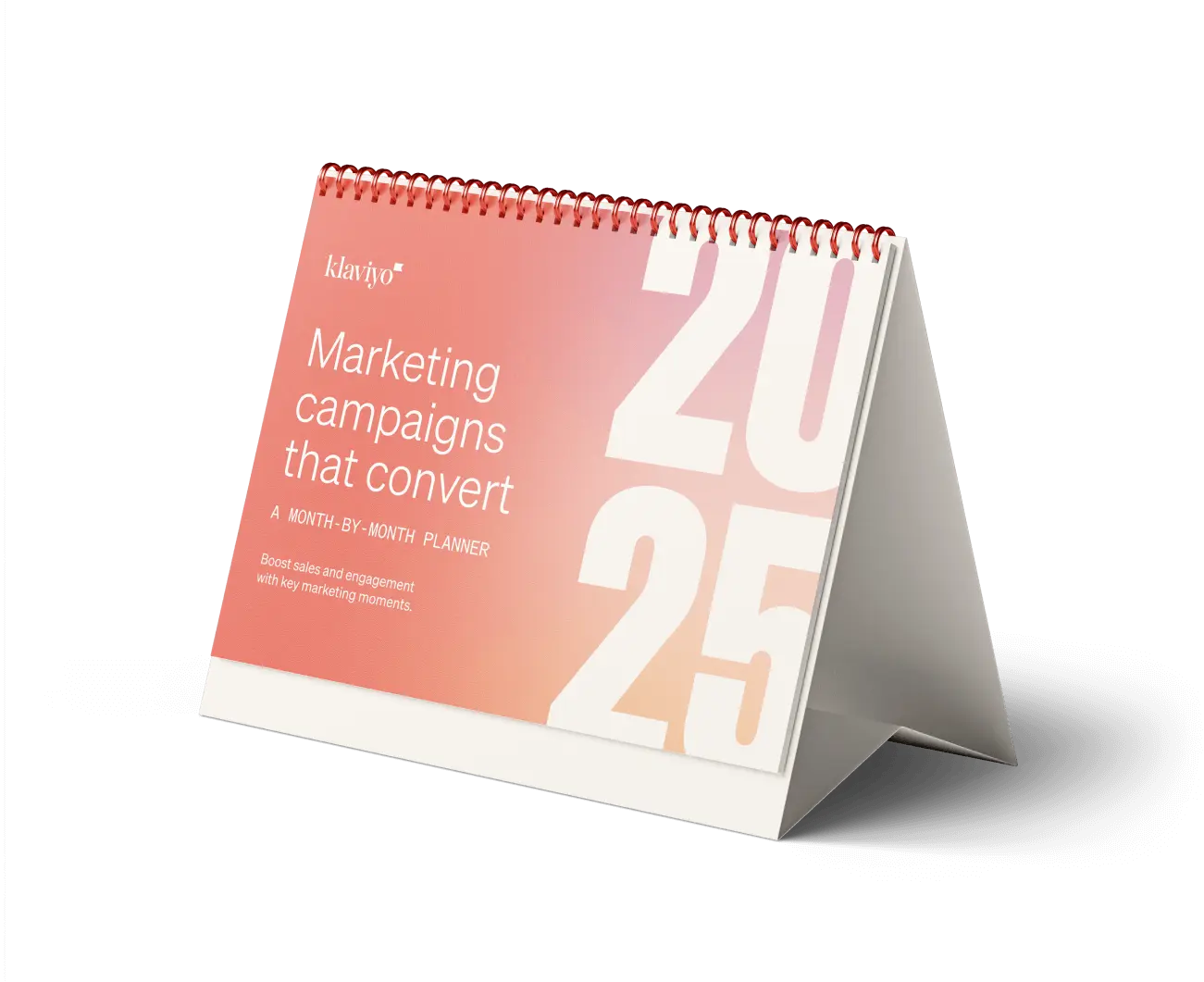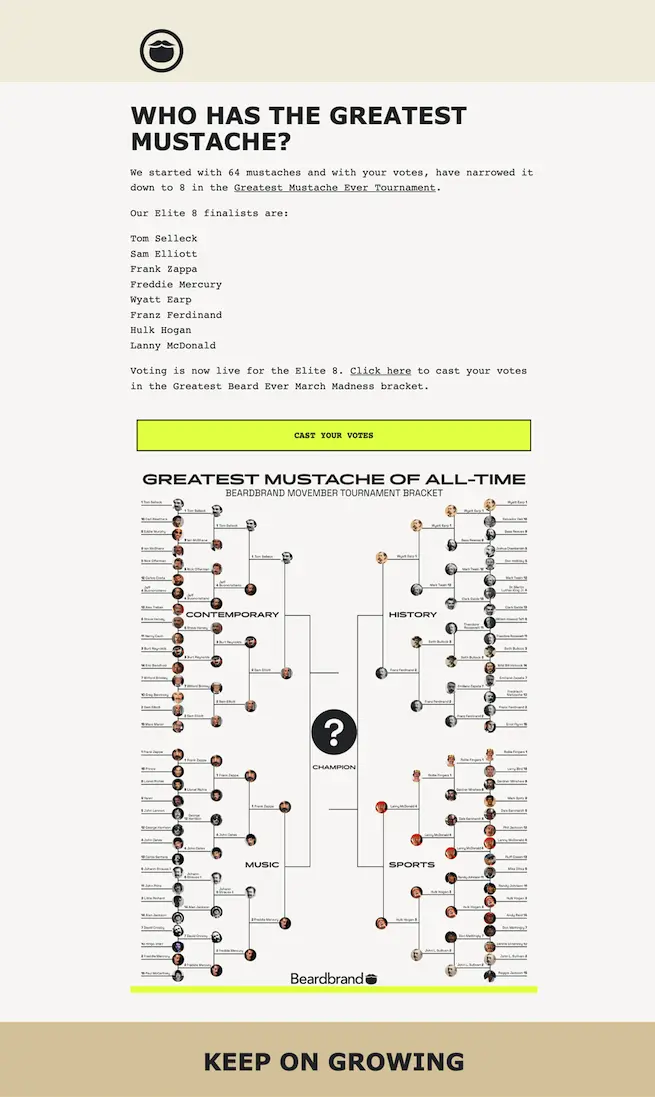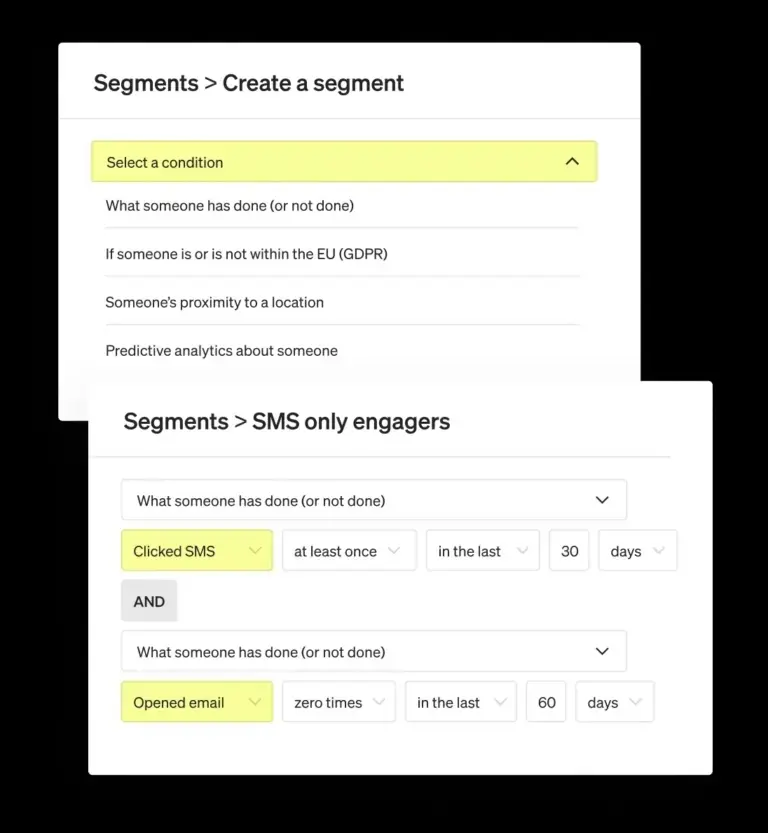Your game plan to win March Madness email marketing: 5 strategies + 4 brand examples
In 2023, 12.6M people watched the women’s March Madness tournament during peak viewership.
The event smashed expectations: Forbes reports that the finale was the most watched women’s college basketball game to date.
And even though viewership dropped by 15% YoY for the men’s March Madness tournament, almost 15M people tuned in for that, too.
All of this is exciting news for ecommerce brands. Historically, March Madness was primarily marketed toward men. But last year’s viewership numbers reveal a much more inclusive reality. Your audience opportunities for March Madness have basically doubled this year.
Whether your customers are die-hard basketball fans or just folks who like your products, March Madness marketing campaigns are a smart way for your brand to increase sales or even just build more loyalty with your existing subscribers.
A word of caution before you read on: The NCAA trademarked “March Madness” and plenty of other phrases associated with the college basketball tournament. That’s why, if you want to use the sporting event to promote your products, you’ll need to get creative. (To avoid a fine, stay away from using the NCAA’s trademarked terms.)
If you need some inspiration for that creativity, you’ve landed in the right place. From subject lines that pique interest to some truly unique email design, this article will teach you everything you need to know to nail a slam dunk on revenue.

1. Win the jump ball with an intriguing subject line
The subject line of your email is the first thing your readers see. Think of it as the start of the game or the tip-off.
Here are a few examples of well-crafted March Madness subject lines:
- “Go for the win with free shipping on your order!”
- “You’re in our Elite 8 🏀Claim your rewards now.”
- “Filled out your bracket yet? Madness is almost here.”
- “Slam dunking into your March inbox with a Madness sale!”
- “Don’t miss out on the Madness 🏀 Get exclusive offers now!”
Not sure where to start? Check out Klaviyo’s Subject Line AI. It can help you improve your subject lines, streamline your campaigns, and customize your message based on your brand and goals. Just plug in verbiage around “March Madness” and watch it upset your expectations.
Brand focus: Farmhouse Pottery’s subject line gets them on the board
Farmhouse Pottery appeals to their audience and manages to avoid NCAA fines with their subject line, “MUG MADNESS SALE”.

The brand’s email also announces an enticing discount in the headline and alongside each product shot.
2. Turn March Madness content into a game
During March Madness, people are typically looking for ways to support their favorite teams and celebrate the tournament. They’re not only watching the games at home—they’re gathering in bars, placing friendly bets, and razzing their colleagues when a favorite team gets knocked out.
One of the most popular ways to make March Madness your own—without infringing on those aforementioned trademark laws—is to turn your email content into a game.
Whether it’s a bracket, a competition, or just an infographic, your brand can evoke the same feeling of hype that comes with being a basketball fan.
Brand focus: Beardbrand’s elite email demands attention
Beardbrand’s email is beautifully designed with a March Madness-style bracket of famous men with mustaches. The only call to action (CTA)? To vote for your favorite mustache.

This is an interesting, somewhat risky move: There are no product shots, no discounts offered, and no obvious path to purchasing—even after the user clicks “CAST YOUR VOTES,” they don’t land on a product page.
But the experience is fun. It’s the kind of activity someone might forward to a friend or use as an excuse to check out from work for a few minutes. It’s also memorable, and we think this email does a lot to establish brand awareness and build trust.
3. Score some bonus points with clever copy and promotions
Short on time or resources? You don’t have to go as far as creating a tournament bracket concept to ensure you’re making the most of March Madness.
Instead, consider what small tweaks you can make to your email campaigns in order to stand out to raving sports fans.
Brand focus: Olive & June subtly alludes to The Big Dance
To the naked eye, this email from Olive & June follows their typical brand formula: highlight a variety of nail polish colors to inspire shoppers to make their next purchase.
But with one headline choice—“March Mani Madness”—Olive & June successfully nods to the famous tournament without uprooting their entire content marketing and CRM strategy for the month.

If you look closely, the only language that aligns with the basketball tournament is in the headline at the top. If there’s a tip to take from this example, it’s that you don’t have to overdo the allusion. One small acknowledgement is enough.
Brand focus: Freshly Picked dangles a slam-dunk discount
Freshly Picked sent this March Madness marketing email with a code to get 20% off. The email starts off with a subject line that touts their “BIGGEST” sale in March, then goes on to reference the basketball tournament in several places—the discount code is “PLAYOFFS” and the copy below the product shots nods playfully to the season.

“March has been full of sale madness”: this copy essentially explains what the subscriber can get as part of the promotion, using March Madness terms.
4. Study your audience to personalize your plays
Every player and coach in the NCAA tournament watches hours of film to learn everything they can about their opponents, giving them the best chance of hoisting up the national championship trophy come the end of March.
Your customers may not be opponents, but that doesn’t mean you shouldn’t learn everything you can about them. Knowing your subscribers—and segmenting them by their interests—will help you send more personalized, relevant email campaigns.
One of our favorite segments for March Madness is geographical location, so you can send emails that are personalized to the team people are likely rooting for. To gather the information you need before the event, use a welcome email series or a sign-up form.
If that doesn’t feel like an authentic move for your brand, use your subscribers’ location to make an educated guess about which team is their favorite.

For example, you might create a segment of everybody who lives close to Durham, North Carolina, then send them emails with a Duke University theme.
5. Optimize your offense with A/B testing
If you run the same play over and over again, your competition is going to catch on—and you’ll start to lose. A/B testing your subject lines, preview text, and email content helps you optimize your email strategy to help you send winning emails game after game.
Here are a few things to try:
A/B test your subject lines
Getting off to a good start can make or break a basketball game. Similarly, the subject line of your email is a great place to start A/B testing because it’s the first thing your audience sees.
You can test a lot of different approaches, like:
- Emojis: Using emojis in your subject line adds personality to your emails. Try testing to see if a basketball emoji works in your March Madness campaign.
- Discounts: Are you running a March Madness promotion? If so, see if mentioning the discount in your subject line helps increase open rates.
- Word count: Experiment with shorter vs. longer subject lines to get a feel for the word count sweet spot that piques your readers’ interest enough to read the subject line all the way through, but also open the email.
A/B test promotions
Including a discount in your emails can make the difference between someone purchasing or not.
It’s a good idea to A/B test different types of promotions in both your subject lines and your content to see which ones move readers to open and purchase.
Try testing the following promotions:
- Dollar-based discount
- Percentage-based discounts
- Free shipping
- Free gift(s)
A/B test email content
March Madness gives you a unique opportunity to test creative, fun, singular content. By testing different versions of an email with a split audience, you can identify what content resonates the most with your audience and produces maximum engagement.
Not sure if March Madness will resonate with your audience? Test your March Madness email campaign with your audience against generic content to see if it drives clicks and conversions.
Use the results to inform whether you double down on a similar campaign next year or spend your time on other ventures.


Related content

Learn 5 ways to turn new holiday shoppers into repeat buyers using personalization, seamless returns, targeted outreach, and AI-driven customer experiences.

Learn what to include in your photography style guide to create consistent, on-brand visuals across your B2C marketing channels.

Shopping is about to hit its peak season. But this year’s surge will look different from those before it. Instead of impulsive buying sprees, shoppers are entering the holidays with a more deliberate mindset.